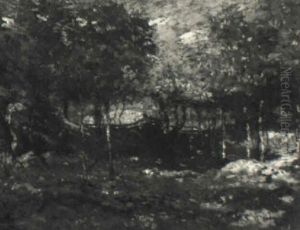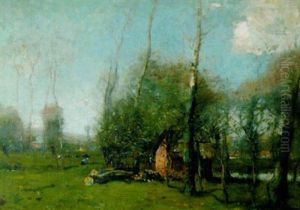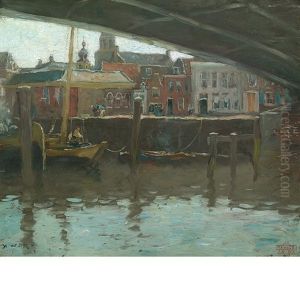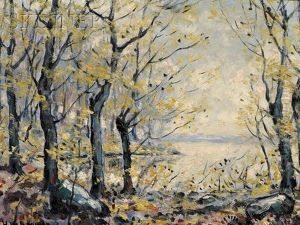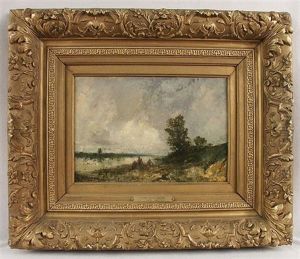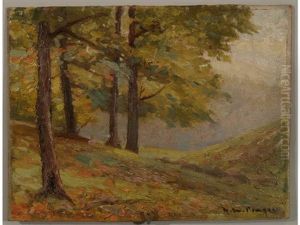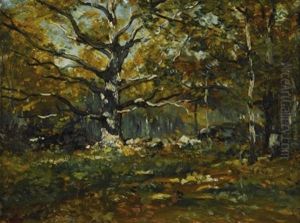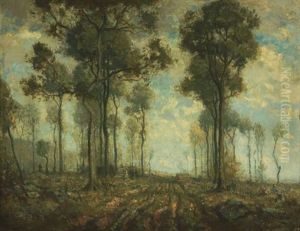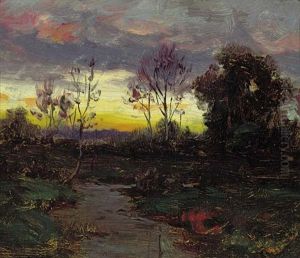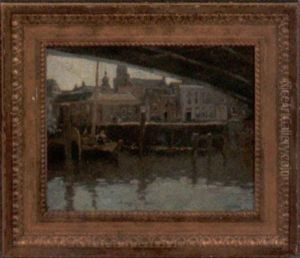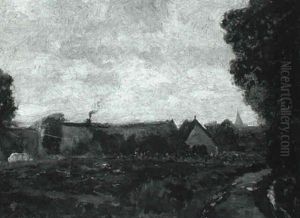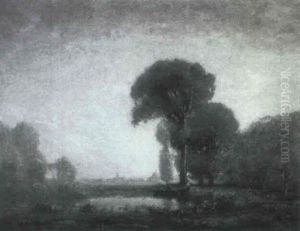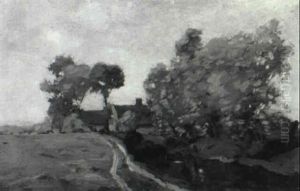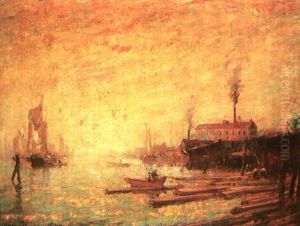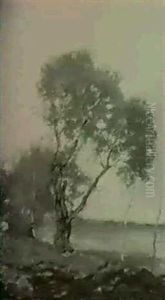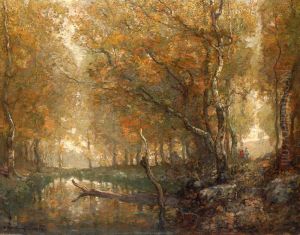Henry Ward Ranger Paintings
Henry Ward Ranger was an American painter primarily known for his role as a leading figure in the establishment of the American Impressionist movement, particularly as the founder of what would become known as the Old Lyme Art Colony in Old Lyme, Connecticut. Born on January 29, 1858, in western New York, Ranger was largely a self-taught artist. He was influenced by the Dutch landscape tradition and the Barbizon School, which emphasized a more tonal and naturalistic approach to painting landscapes.
In the late 1880s, Ranger spent time in Europe, where he was particularly impressed by the works of the Barbizon painters, such as Camille Corot and Charles-François Daubigny. Upon returning to the United States, he began to gain recognition for his landscape paintings, which often featured the pastoral scenes of New England. Ranger preferred to work en plein air (outdoors), a practice that was fundamental to Impressionist painters, and he developed a technique that combined the Tonalism of the Barbizon School with a more distinctly American sensibility.
In 1899, Ranger moved to Old Lyme, and his presence there quickly attracted other artists. This led to the formation of the Old Lyme Art Colony, which became a hub for American Impressionism. Despite his association with American Impressionism, Ranger's own work remained more tonal and less focused on the play of light and color characteristic of Impressionist paintings. His influence, however, was felt in his mentoring of other artists and in promoting the acceptance of Impressionist techniques within the American art scene.
Ranger's success during his lifetime included memberships in prestigious art organizations and his works were collected by major museums. His leadership in the Old Lyme Art Colony and his advocacy for a distinctly American style of painting were significant contributions to the development of American art in the early 20th century.
Henry Ward Ranger died on November 7, 1916, in New York City. His legacy is marked by his influence on American landscape painting and the pivotal role he played in fostering the growth of one of America's earliest art colonies.

